Also known as white exodus, white flight describes the migration of white people away from racially diverse cities and towns in America.
In 1950, the South Shore neighborhood of Chicago was 96 percent white. By 1980, the neighborhood was 96 percent Black. What happened? Today, many historians point to the phenomenon of “white flight,” when scores of white Americans abandoned urban centers for homes in the suburbs.
The factors that led to white flight are complex. Between the 1910s and the 1970s, millions of Black Americans moved north during the Great Migration. In the middle of that period, the post-World War II economic boom meant that many families had money to spend and wanted bigger homes.
But racist legislation made suburban life nearly impossible for many Black families. As many white Americans flocked to the newly created suburbs, most Black Americans increasingly congregated in cities.
This trend of “white flight” completely transformed neighborhoods and entire cities across the United States. And it would have long-term implications — many of which the country is still experiencing to this day.
How The “Great Migration” And 1930s Housing Laws Laid The Groundwork For White Flight
The dominoes that led to white flight arguably began to fall in the 1910s, when Black Americans started to leave the South in great numbers during the Great Migration. Between the 1910s and the 1970s, some six million Black Americans left the South to move to the North, Midwest, and West.
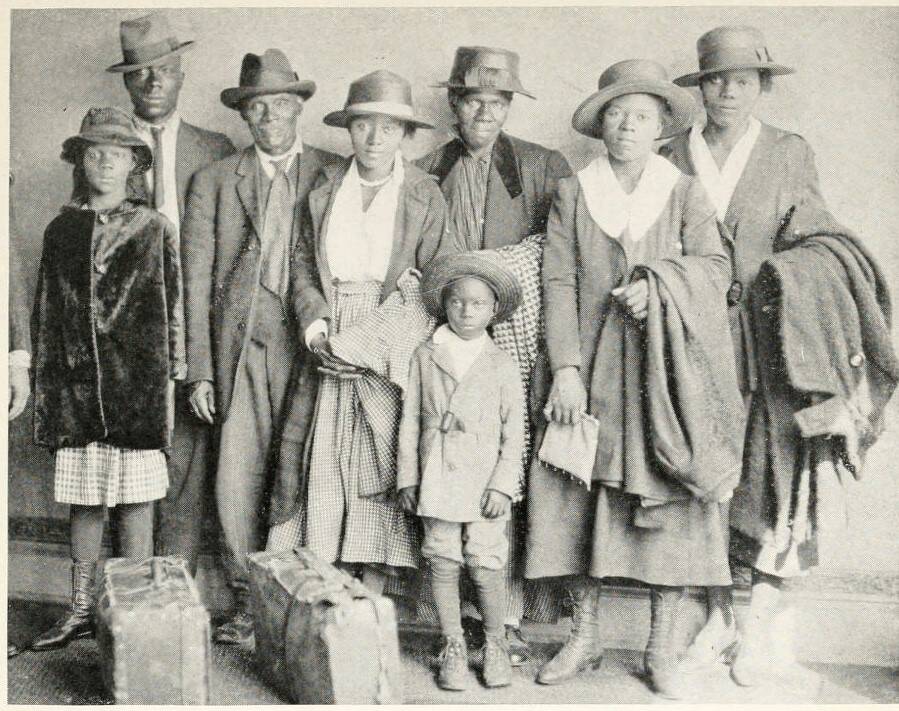
Public DomainScott and Violet Arthur, and their family, left Texas after two of their sons were lynched in 1920. They settled in Chicago.
This transformed American cities. As the Smithsonian Magazine reported in 2016, 90 percent of Black Americans lived in the South in the 1910s. By the 1970s, 47 percent of Black Americans resided in the North and West.
Meanwhile, federal policies put into place in the 1930s laid the groundwork for housing discrimination in American cities. During the Great Depression, New Deal programs offered government-insured mortgages to prevent widespread foreclosures. But people who lived in Black neighborhoods — which were often labeled as “high-risk” places where the property values were most likely to go down — did not benefit from these programs.
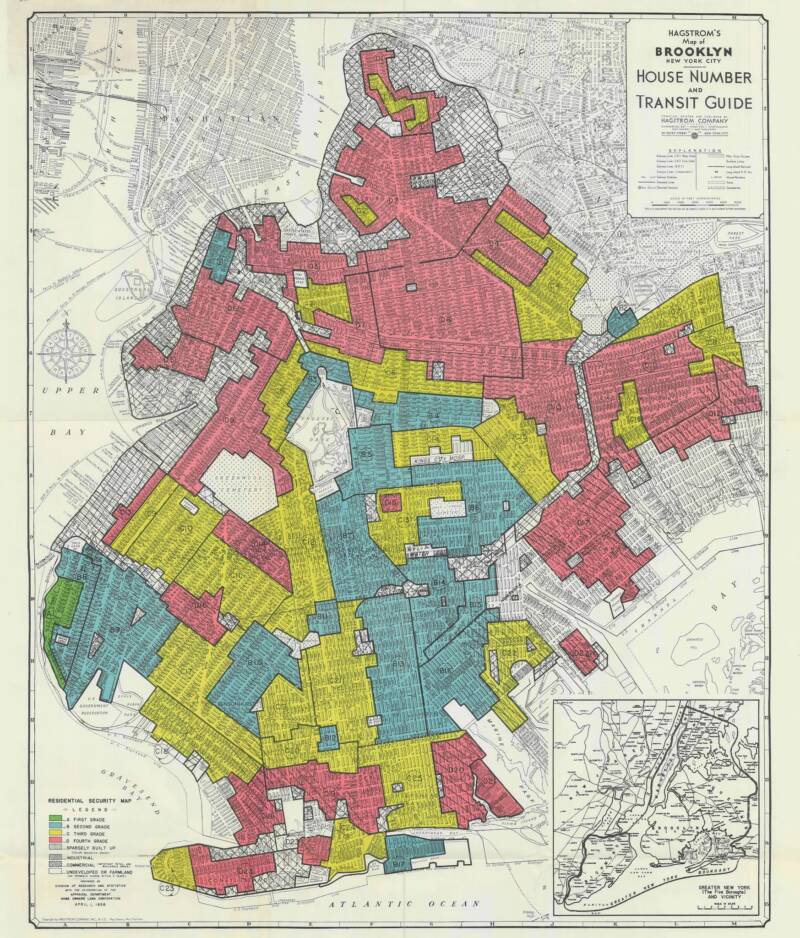
National Archives and Records Administration, Mapping InequalityA 1938 map of Brooklyn, showing neighborhoods classified by their “riskiness” in terms of property values.
The Federal Housing Administration, established in 1934, refused to insure mortgages in these Black neighborhoods in a policy that’s known today as “redlining.” And this policy even applied to integrated neighborhoods that included both Black and white families. If Black families started moving into a certain area, the government might decide that the white homeowners who lived nearby could not qualify for mortgage assistance.
At the same time, the Federal Housing Administration subsidized the construction of subdivisions for white Americans, where Black Americans were excluded. Some houses had covenants that specifically stated that they could not be sold to “any person not of the Caucasian race.”
This set the stage for white flight, which increased after World War II.
How “White Flight” Took Off After World War II
Though the groundwork had been set in the early 20th century, most historians argue that white flight began in earnest in the 1940s. Writing for The New York Times in 2017, Princeton economics professor Leah Boustan explained that for every one Black American who arrived in metropolitan areas in the North and West between 1940 and 1970, two white people left.
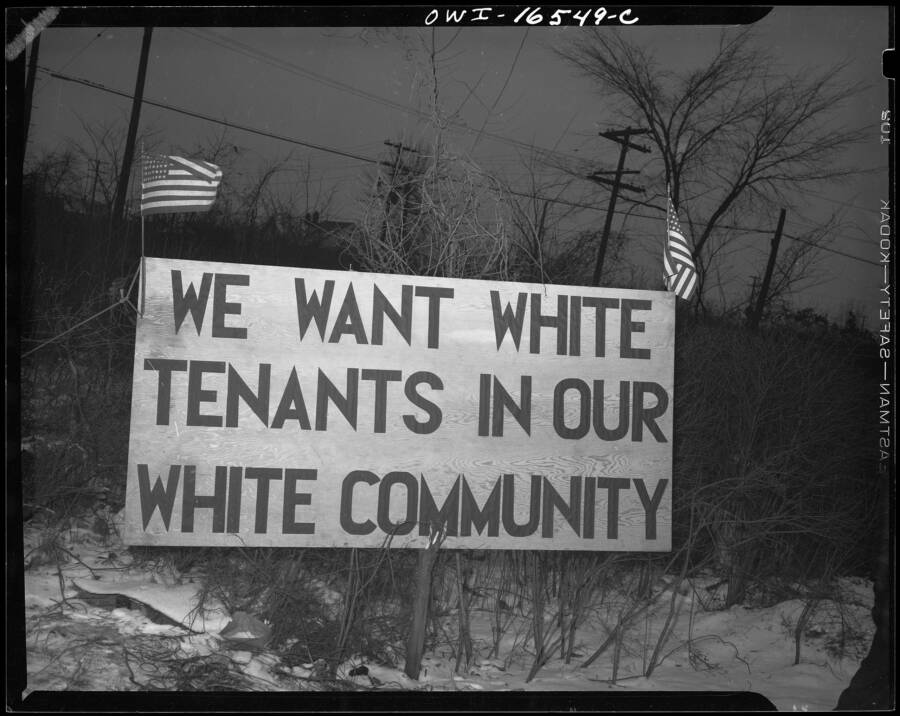
Library of CongressThis sign was erected near the Sojourner Truth homes — a U.S. federal housing project in Detroit, Michigan — to protest the arrival of Black Americans in the area in 1942.
It’s been argued that white Americans left cities because of the post-World War II economic boom. The GI Bill — which mostly benefited white veterans — included provisions like backing housing loans. At the same time, the postwar Baby Boom meant that many families wanted larger homes.
They flocked to new suburban communities like Levittown, New York, which was constructed in the late 1940s. As Business Insider reported in 2019, the suburbs expanded by 47 percent in the 1950s. Offering green spaces, comfortable houses, and other perks, they played a huge role in white flight — especially because these spaces were off-limits for Black families.
William J. Levitt, the developer behind Levittown, defended this as a business decision: “If we sell one house to a Negro family, then 90 or 95 percent of our white customers will not buy into the community.”
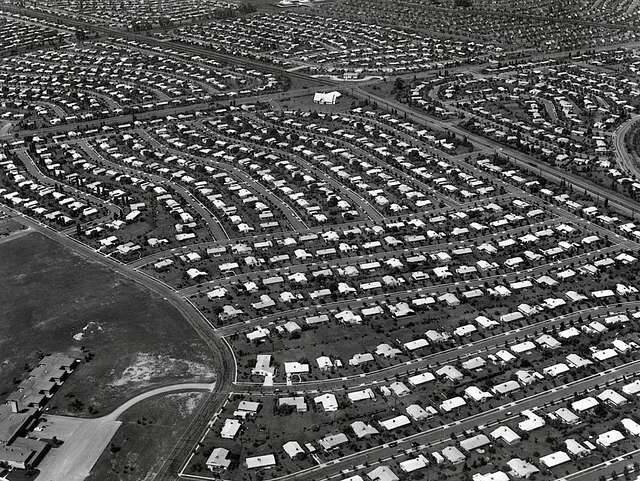
Public DomainLevittown, New York spawned similar suburbs across the country. This is Levittown, Pennsylvania in 1959.
Houses in Levittown could only be sold to white veterans. And they included deeds that forbade their sale to Black families. So while white families could leave urban areas for the suburbs, Black families had no such choice.
But the suburbs are only part of the story. Another part of the story has to do with the cities themselves. As Boustan notes, “concerns about new Black neighbors was indeed a primary motivation” for some white families who started to leave cities in the 1940s. And once a white family left a neighborhood and a Black family moved in, fear-mongering realtors would engage in “blockbusting” — warning white homeowners that more Black people would move in and that property values would soon drop.
Then, as more white homeowners vacated urban neighborhoods, realtors often sold their homes at a huge markup to Black families.
Meanwhile, Black families who tried to leave cities faced violent resistance. Some suburbs were “sundown towns,” which banned Black people after dark. Others didn’t allow Black people in at any time of day. When just one Black family tried to move into the suburb of Cicero, Illinois in 1951, they were driven out by a mob of 4,000 white protestors who set their property on fire.
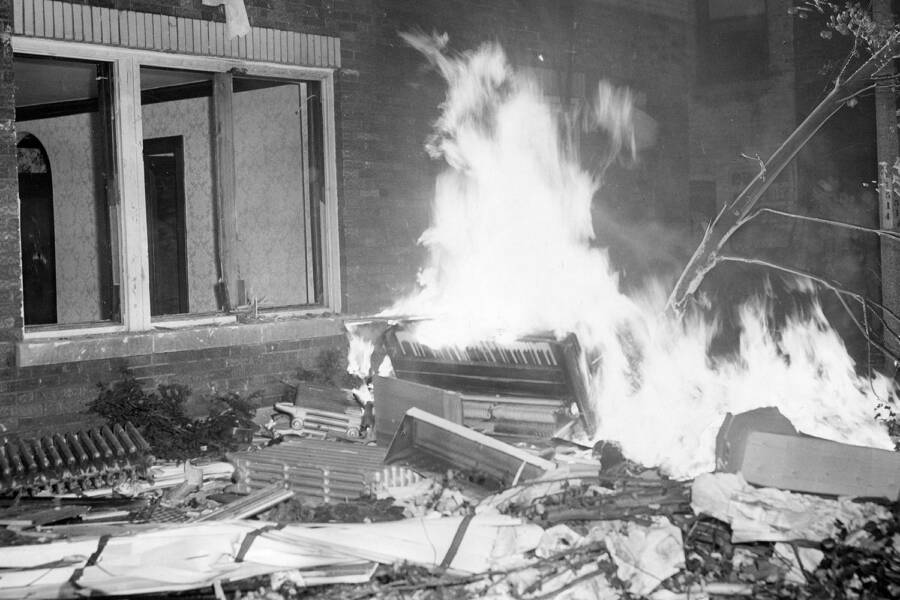
Chicago Tribune ArchivesWhen a Black family tried to move to a Chicago suburb called Cicero, thousands of white residents rioted.
Blockbusting, exclusionary suburbs, redlining, postwar economics, civil rights, integration, and plain racism all fed into white flight. So how did neighborhoods and cities across the nation change between 1940 and 1970?
“White Folks Moved Out”: The Transformation Of American Urban Centers

Arty Pomerantz/New York Post Archives/NYP Holdings, Inc./Getty ImagesThe Bronx borough of New York City lost one in five residents during the 1970s as white flight impacted the region.
Between the 1940s and the 1970s, demographics in American cities dramatically transformed as scores of white Americans flocked to the suburbs, and Black Americans increasingly moved into urban neighborhoods that had previously been populated by mostly white people.
According to Bloomberg, Detroit’s Wayne County lost 26.6 percent of its white population by the 1970s, Cleveland’s Cuyahoga County lost 20.1 percent of its white population, and Chicago’s Cook County lost 15.5 percent.
The city of Boston, Massachusetts was approximately 95 percent white in the 1950s, but its white population plummeted from 759,000 to 394,000 by 1980 — and the city’s Black population tripled during that same time period. Meanwhile, across the country in Oakland, California, the city went from having 329,000 white residents and 47,500 Black residents in 1950 to having 130,000 white residents and 159,000 Black residents in 1980.
Some neighborhoods saw especially jaw-dropping transformations. As NBC Chicago noted, the white population of the city’s Englewood neighborhood “plummeted” between 1960 and 1980. It went from 51,583 — to 818.
“As we moved in, white folks moved out because they were afraid of what our families represented,” former First Lady Michelle Obama, whose family moved to Chicago’s South Side to take advantage of the area’s schools, recalled while speaking to an audience at the 3rd annual Obama Foundation Summit in 2019. “Y’all were running from us. And you’re still running.”

MEEP/FlickrAn abandoned building on Chicago’s South Side, which experienced white flight in the second half of the 20th century.
As PBS explained in 2003, white flight created a vicious cycle in American cities across the country: Property values go down, taxes go up, and public services suffer. All of this feeds into a cycle of urban decay. In the 1970s, the Bronx in New York City lost one in five residents — and the borough largely crumbled. In Indiana, the city of Gary battled both deindustrialization and white flight — leading to the downward spiral of the former “Magic City.”
In describing her personal experience in Chicago, Obama spoke of how white flight “left communities in shambles.” In her memoir Becoming, she recalled “the neighborhood businesses closing one by one, the blight setting in.”
While the biggest surge of white flight purportedly came to a close in the 1970s, many experts argue that white flight never really ended.
Segregation In The United States Today

Raymond Boyd/Michael Ochs Archives/Getty ImagesWhite flight was one factor that led to Gary, Indiana’s downward spiral in the second half of the 20th century. Seen here is the city’s abandoned Union Station, which the city hopes to eventually renovate into a hub for tech businesses.
Though white flight officially lasted from the 1940s until the 1970s, different forms of segregation have endured in the United States since then.
Large suburbs are more diverse today, but white residents sometimes opt to live in exclusive, gated communities. Across the nation, NIMBY movements — “not in my backyard” — frequently oppose the development of low-income housing near wealthy homes. And a University of California, Berkeley study found that about 81 percent of American cities and metropolitan regions were more segregated in 2019 than they were in 1990.
As such, white flight is just one part of the larger American story about race. Though the factors that led to the urban exodus of white residents were myriad, and economics played an important role, white flight is ultimately a story about segregation. In some cases, it was self-segregation like the white suburb of Levittown, New York. In others, it was forced segregation, like the violent exclusion of a Black family from Cicero, Illinois.
But it’s a story that can still be seen in many American cities and neighborhoods in recent years — and its effects are still felt to this day.
After reading about the turbulent history of white flight in America, look through these raw photos of Brooklyn in the 1960s. Or, see how deindustrialization created the so-called “Rust Belt” in the United States.





